
Energy storage for renewable energy
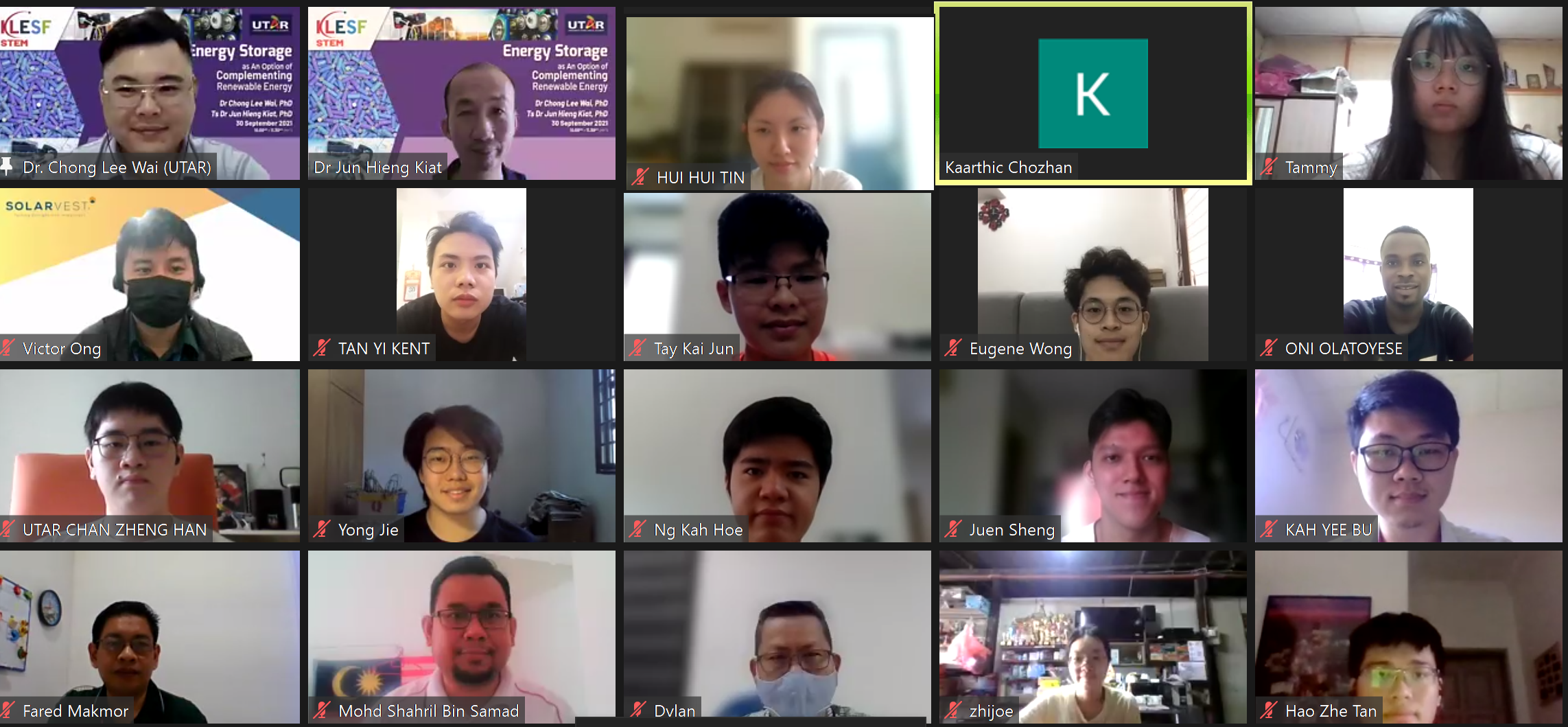
Dr Chong (top row, far left), Dr Jun (top row, second from left) with the participants
The Centre for Corporate Community Development in collaboration with Lee Kong Chian Faculty of Engineering and Science organised a webinar titled “Energy storage as an option of complementing renewable energy” on 30 September 2021 via Zoom and Facebook Live. The webinar, which saw more than 150 participants, was presented by LKC FES lecturers Dr Chong Lee Wai and Assoc Prof Ts Dr Jun Hieng Kiat. The webinar shared the use of energy storage as an option of complementing renewable energy for sustainability and environmental conservation. It also covered the latest updates on renewable energy, energy storage technologies and new generation battery.
Dr Jun spoke about global issues and renewable energy in Malaysia as well as a brief review of renewable energy and issues and solutions relating to renewable energy. “Under the United Nations’ Paris Climate Agreement, the key goals are to limit the average global temperature increase to less than two centigrade, enhance resilience and adaptation to climate impacts and align financial flows in the world with these objectives. Under the 12th Malaysia Plan, Malaysia will implement a low-carbon, clean and resilient development plan to achieve sustained socio-economic growth. Carbon pricing and carbon tax are proposed to mitigate gas emissions. Apart from that, renewable energy generation will be increased by the year 2025,” said Dr Jun.
He added, “The global greenhouse gas emission is made of 65 per cent of carbon dioxide from fossil fuel and industrial processes, 11 per cent of carbon dioxide from forestry and other land use, 16 per cent of methane, six per cent of nitrous oxide and two per cent of fluorinated greenhouse gases. A lot of action is needed to reduce greenhouse gas emissions. One of the solutions to reducing Co2 is to replace the consumption of fossil fuel through alternative energy sources. Opportunities that Malaysia can look into is hydrogen energy and a multi-generation system. The challenges are intermittent power generation, excess power generated and insufficient power supply. Thus, an energy storage system is the solution.”
Dr Chong said, “High solar adoption creates a challenge for utilities to balance supply and demand on the grid. Grid operators curtail renewable generation when supply exceeds demand. The energy storage system is a device that converts electrical energy from power systems into a form that can be stored for converting back to electrical energy when needed. Lead-acid battery is commonly used in automobiles and PV systems as it is a well-established and mature technology while lithium-ion batteries are commonly used in portable electronics, electric vehicles and electrical power systems. Lithium-ion has higher power density, energy density, longer life cycle and service life but the cost is more expensive compared to a lead-acid battery.”
In the webinar, he spoke about the challenges of integrating renewable energy with the grid, energy storage technologies, new generation batteries, hybrid energy storage systems, types of batteries and their application. He added, “Challenges of li-ion batteries are slower charging time and the capacity losses after each cycle. The new generation battery, known as a Solid-state battery, is a battery technology that uses solid electrodes and a solid electrolyte instead of the liquid or polymer gel electrolytes found in lithium-ion batteries. QuantumScape, a battery start-up reported their solid-state batteries achieved 80 per cent longer range than conventional Li-ion batteries and are able to charge up to 80 per cent in 15 minutes with 80 per cent capacity retention after 800 cycles. Its target is to establish a production line for these batteries by 2025.”
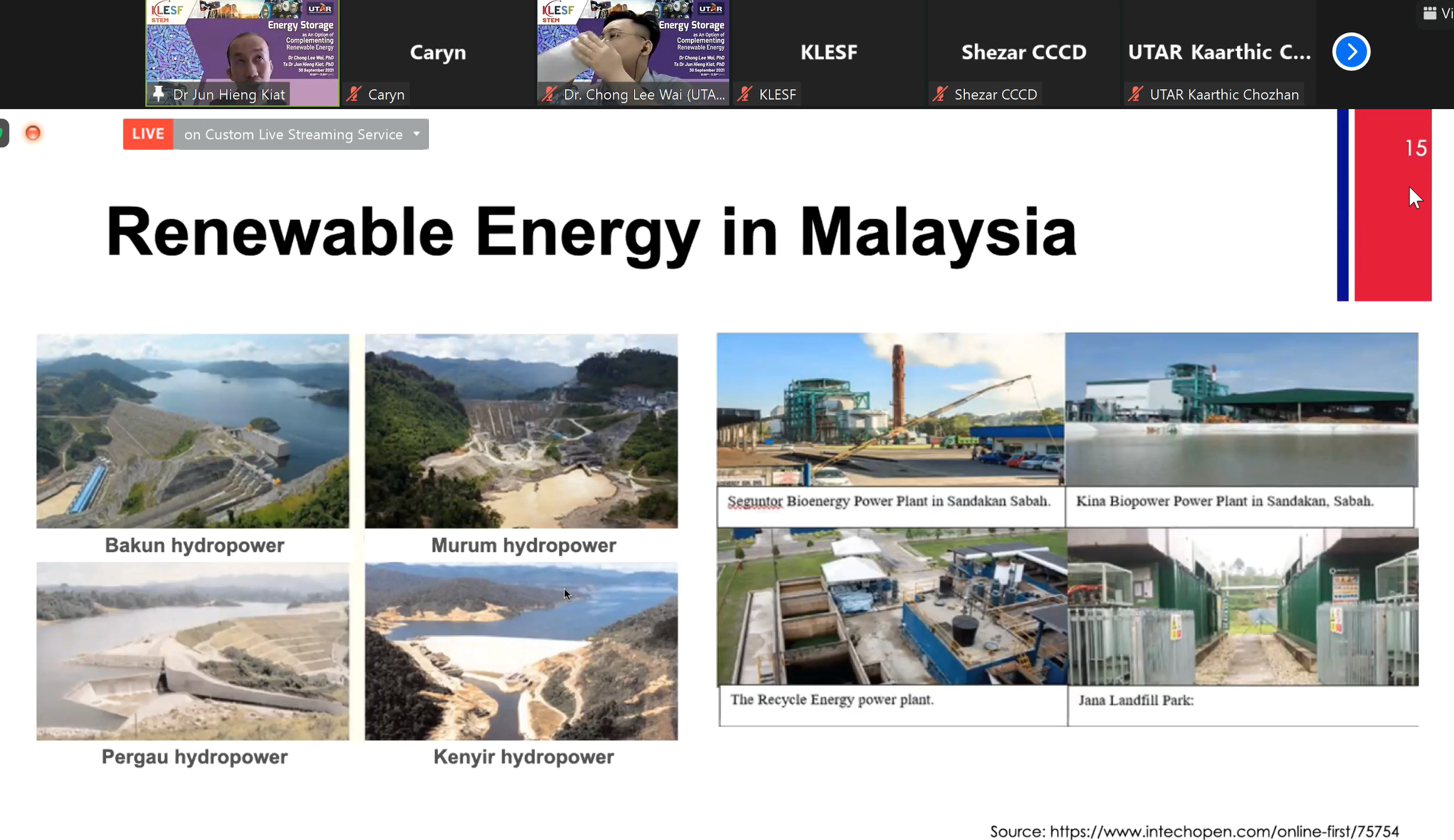
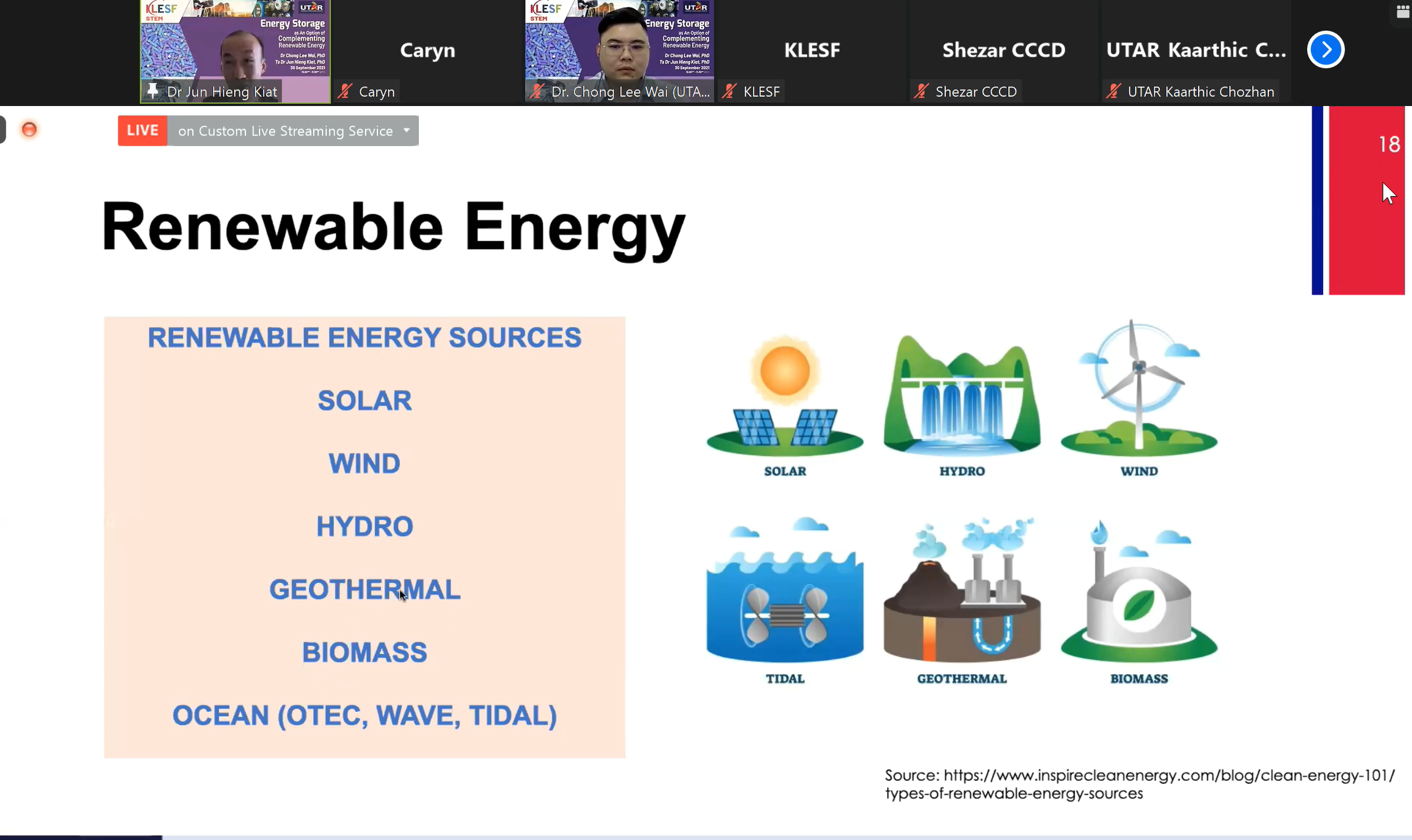
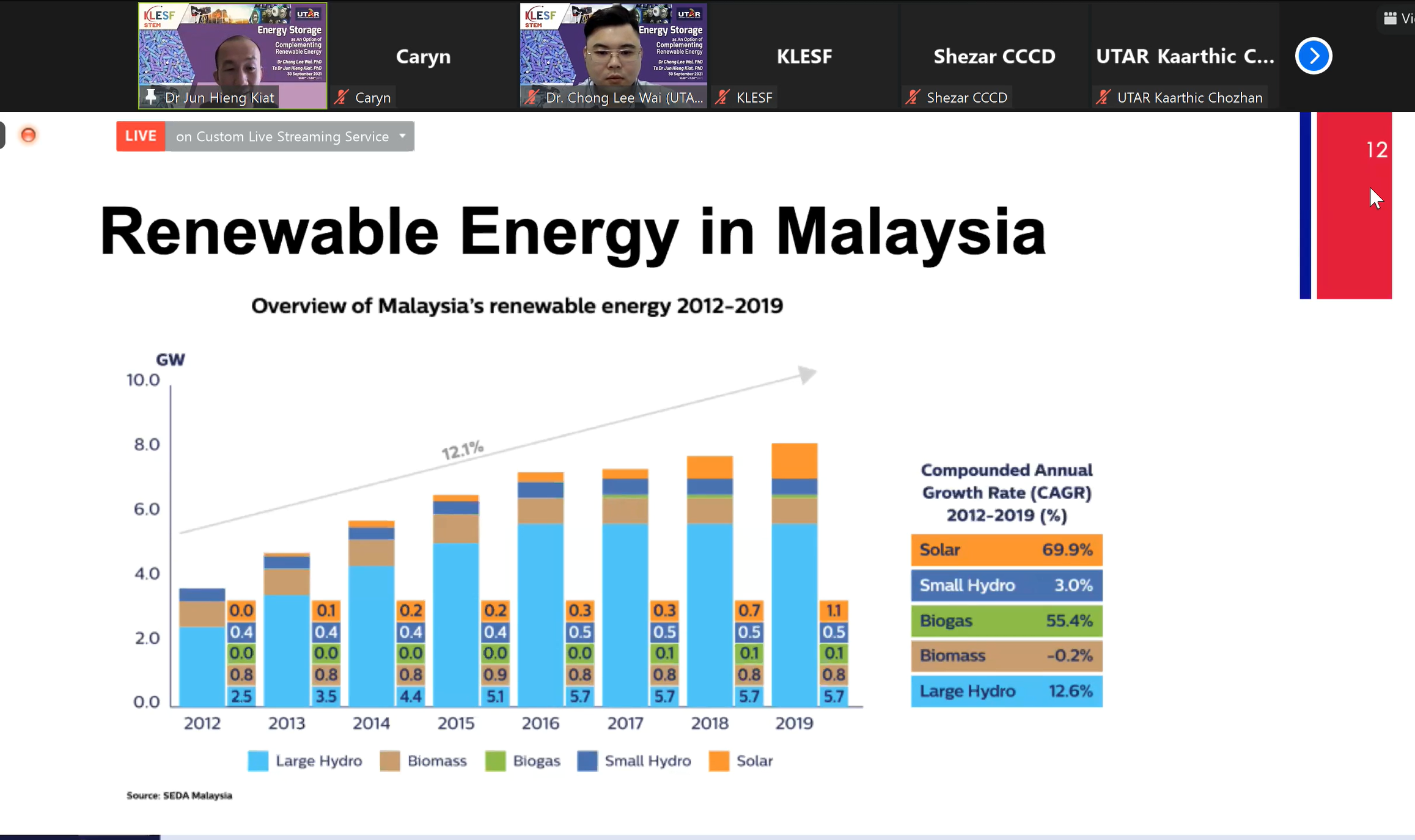
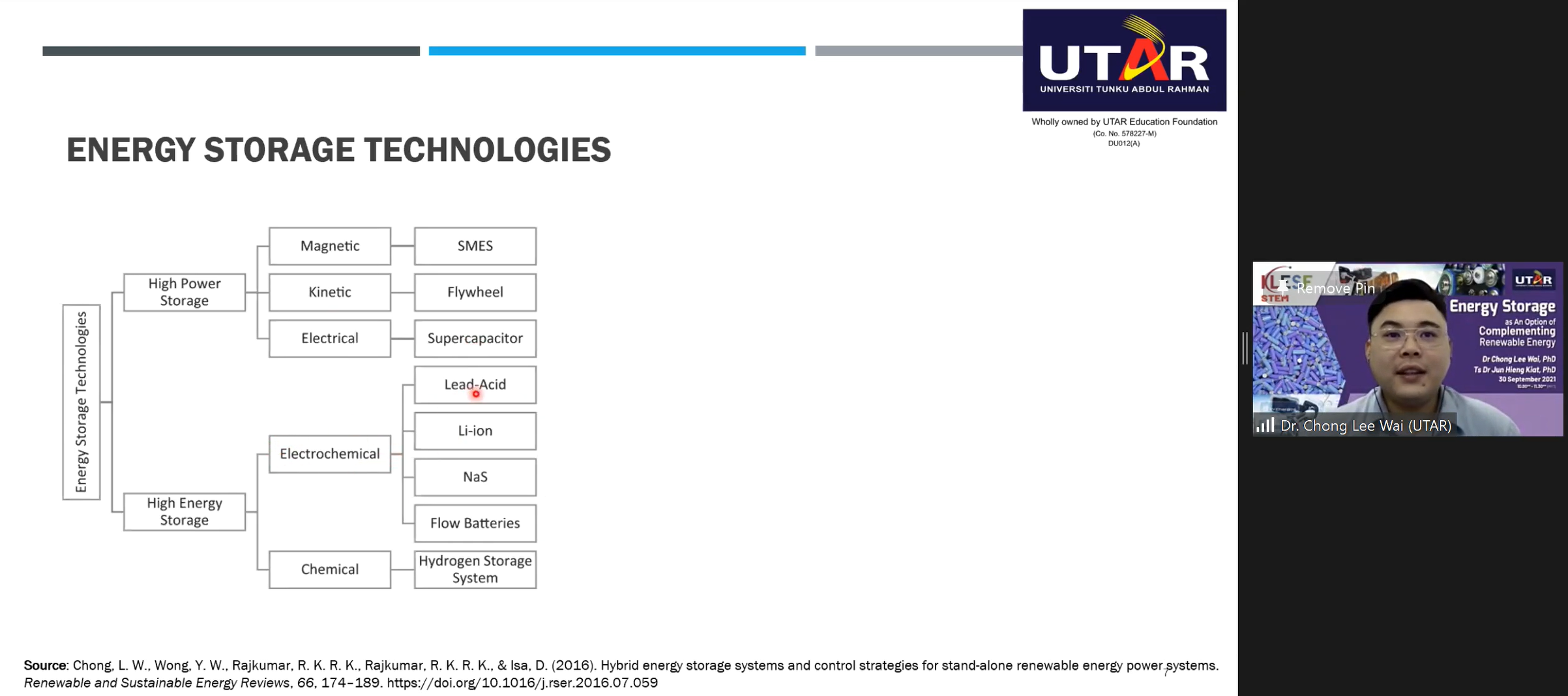
Slides shared by Dr Jun and Dr Chong
© 2021 UNIVERSITI TUNKU ABDUL RAHMAN DU012(A).
Wholly owned by UTAR Education Foundation (200201010564(578227-M)) LEGAL STATEMENT TERM OF USAGE PRIVACY NOTICE